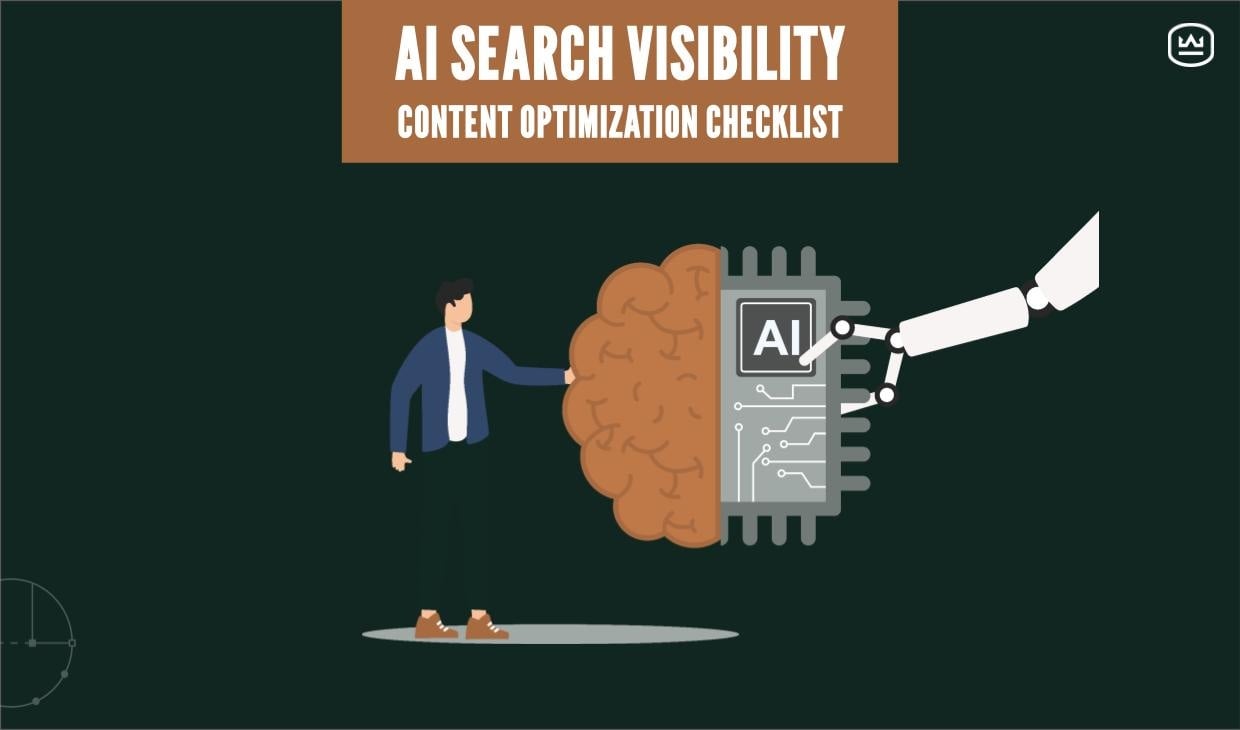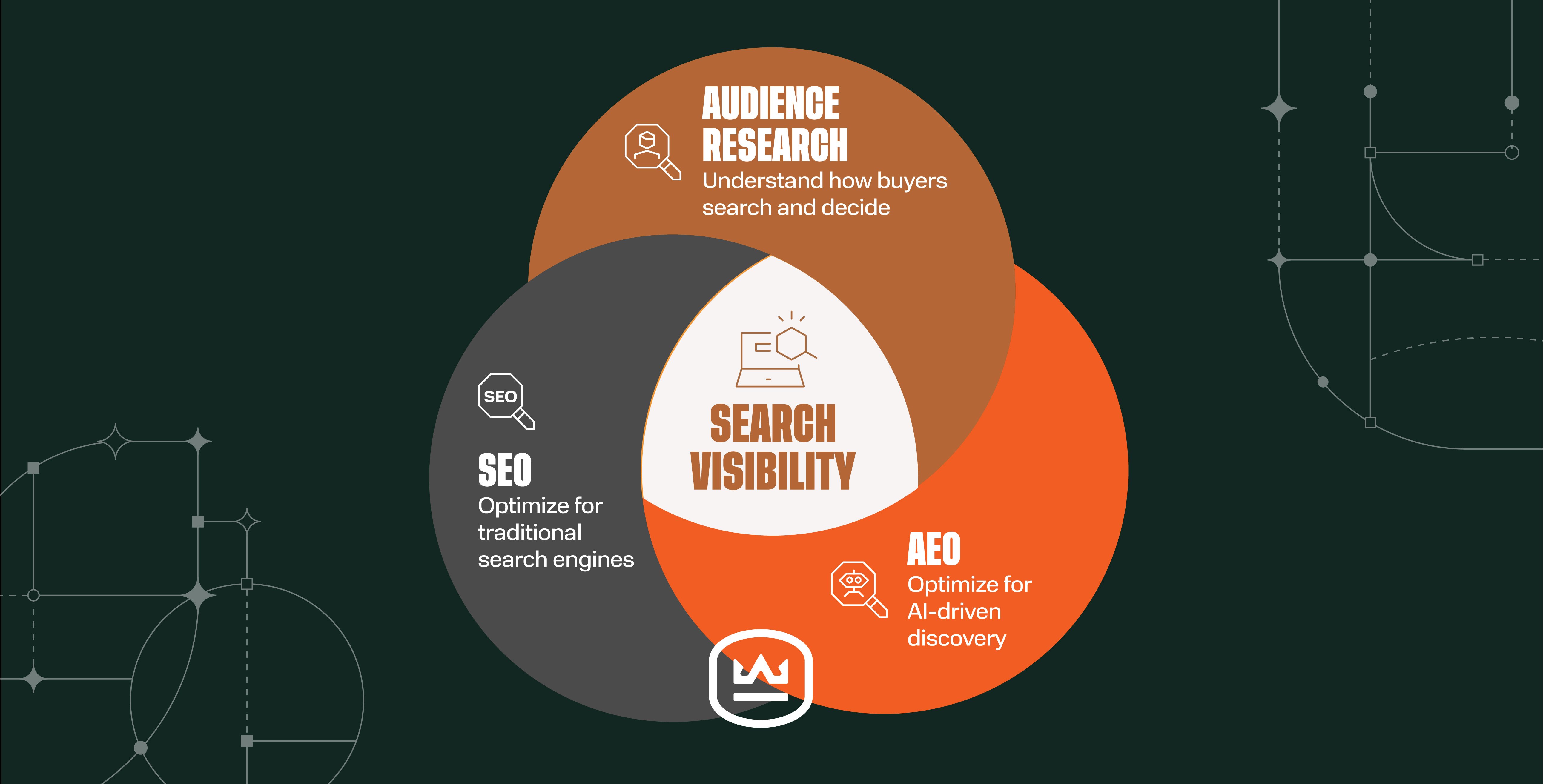6 Keys to a Successful Account-Based Marketing (ABM) Plan
Written by
Of course, we’re a huge proponent of inbound marketing. Time and again, we’re impressed by the results our disciplined clients in complex industries achieve when dedicated to a B2B inbound strategy.
But, that’s not necessarily the only strategy you should be deploying. Going hand-in-hand with inbound marketing for industrial manufacturers should be an account-based marketing (ABM) plan, and here are a couple reasons why:
- 76% of marketers saw higher ROI with ABM than any other marketing strategy in 20201
- 60% of those who have employed ABM for at least one year attribute a revenue increase to its use2
Sounds great! But, don’t jump in without familiarizing yourself with these keys to a Successful Account-Based Marketing (ABM) Plan:
- Choose Your Approach
- Leverage Your Content Library
- Align Sales and Marketing
- Set SMART Goals
- Identify Target Prospects
- Define Technology and Setup Requirements
Before we dig in, let’s start with some definitions…
What is account-based marketing?
Simply stated, account-based marketing is a B2B strategy that targets a set of desired prospects using highly personalized contacts.
ABM is not targeted outbound marketing (irrelevant emails or random cold calls); it’s much more considered and strategic. ABM doesn’t replace your inbound marketing strategy — it works best when run in conjunction with inbound tactics (content creation, marketing automation, sales enablement, etc.), so they really do go hand-in-hand.
Why is ABM so effective for industrial manufacturers?
ABM provides marketing and sales teams with a number of advantages: a faster sales process, cost effectiveness, and more efficient use of marketing resources than traditional marketing.
ABM typically aligns with the business models and decision-making processes of many industrial manufacturing companies, so it’s particularly effective because:
- Purchases are highly considered
- There’s a small pool of large-sized target accounts
- Cross-selling to a current customer base yields high profitability
- It emphasizes high customer lifetime value (CLV)
- A strong focus is put on reaching sales goals faster
Now, let’s unpack those keys to an account-based marketing plan so you are set up for success:
1. Choose Your Approach
You have a choice to make immediately that will affect every piece of your ABM strategy. Shape your efforts around one of these three ABM approaches:
- Pursue contacts within different divisions and/or personas at companies with which you already have established relationships, and promote the effectiveness of your work using tools such as custom sales pages
- Identify companies that have similar, desirable business attributes and send targeted content to key contacts, building brand awareness and guiding them along the buyer’s journey
- Select specific target industries or target personas within industries (e.g., Design Engineer at an Automotive OEM) and market relevant content to them directly. This ABM “demand generation” approach most often uses LinkedIn to filter and find the audiences you’re looking to reach and target
To maximize ABM’s tactical effectiveness, choose the approach that best aligns with your marketing automation and CRM systems as well as your targeted accounts — their number, internal structure, and projected monetary value.
2. Identify Target Prospects
In conjunction with determining your approach, you need to define your “ideal customer profile.” It’s imperative that marketing and sales teams agree on this criteria (more on that below). Try starting with characteristics like these:
- Industry — Targeting specific industries and/or personas within industries allows you to expand your audience while still maintaining relevance
- Size
- Annual revenue
- Location
- Previous purchases
- Opportunities for growth into different departments/divisions
- Plus, identify the job titles of potential buyers
Use this criteria to pull lists of companies and contacts from your marketing automation platform, CRM, social networks, and various company websites. Remember that ABM needs to be a strategic approach aligned with your business needs, but it doesn’t have to be a narrow approach. The larger the audience for LinkedIn, the better!
RELATED: 9 Easy Ways to Identify & Prioritize Your ABM Targets,
HubSpot Prospects is the Best Kept Secret in B2B Sales Prospecting Tools [VIDEO]and Buyer Intent Data: What It Is, Why It’s Important & How to Use It
3. Leverage Your Inbound Content Library
Since your target accounts may not have previous knowledge of, or organic online interaction with, your company, sharing relevant content in your outreach is a must. Determine which offers in your library can be tailored for targets’ specific needs so your outreach has context behind it. If budget allows, create new content to fill gaps.
Also, develop a strategic cadence for content delivery. Here’s one possible format:
- Run a targeted paid ad (LinkedIn, perhaps?) to put your company top of mind for key contacts — this also gives them a chance to organically convert
- Follow up with strategic emails, sales outreach, LinkedIn messages, event invitations, etc. Make each offer unique and reflective of your understanding of the recipient and their specific business needs
- Make sure your sales and customer service teams know the steps to take after a contact expresses interest or converts on one of your messages so they can move closer to closed/won action
4. Align Sales and Marketing
That last bullet is more important than you think. Your ABM plan will fail if there aren’t clearly understood protocols in place for following up with target leads.
ABM leads are perishable! It’s vital to nurture leads who don’t immediately respond to sales follow-ups. Stay in front of ABM leads and continue to explain your value (a salesperson connecting on LinkedIn, an email that shares more info on the topic they converted on, etc. … you have options.)
RELATED: Sales and Marketing Glossary: 10 Most Important Terms to Agree On for Alignment
5. Set SMART Goals
Detail how your ABM strategy will be carried out, making goals specific, measurable, achievable, relevant, and time-bound (SMART). Arbitrarily reaching out to contacts is a waste of time and money.
Think about ABM as an iterative approach, much like how we view growth-driven design in websites. Industrials have long sales cycles, so it’s important to connect with prospects over an extended period of time.
Developing a long-term strategy that leverages new and existing collateral leaves flexibility for refining the target audience and keeps things fresh. This also underscores the importance of measuring success — reacting to data, and refining the strategy to meet/exceed goals over time.
6. Define Technology and Setup Requirements
If you’re using HubSpot, setup can initially include company score reporting, workflows, custom contact properties, social media ads, and tracking URLs. If you have HubSpot Enterprise, even more ABM features are available.
Once these key pieces are in place, it’s time to launch your ABM plan! Be mindful of:
- Monitoring the results over time
- Scheduling a debriefing with marketing and sales to assess goal attainment and budget alignment
- Identifying accounts in the pipeline that would benefit from additional nurturing
Account-based marketing is a popular and effective B2B strategy and complements an existing inbound strategy. And since ABM often involves paid media, take a moment and review this guide: Inbound Marketer’s Guide to Paid Media.
Sources:
1DemandGen Report, New Research: 76% Of Marketers Using ABM Experienced Higher ROI In 2020, January 2021
2Demand Metric, ABM Adoption Benchmark Report
Subscribe To Our Blog
Information. Insights. Ideas. Get notified every time a new Weidert Group blog article is published – subscribe now!
You May Also Like...

Search Engine Optimization
How Falcon Rebuilt Industrial AI Search Visibility in 2025

Search Engine Optimization
The New Search Visibility Checklist for AI-Era Content Marketing

Search Engine Optimization
SEO Isn’t Dead. It’s Evolving: How B2Bs Can Stay Visible in the Age of AI
Accelerate Your Growth with
Weidert Group
If you’re ready to explore a partnership, request a personalized consultation with our team.

